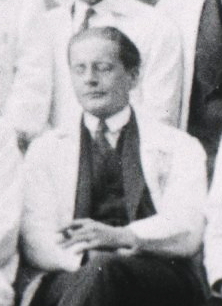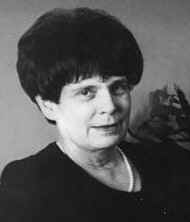
In psychology, fantasy is a broad range of mental experiences, mediated by the faculty of imagination in the human brain, and marked by an expression of certain desires through vivid mental imagery. Fantasies are typically associated with scenarios that are statistically implausible or impossible in reality.

The id, ego, and super-ego are a set of three concepts in psychoanalytic theory describing distinct, interacting agents in the psychic apparatus. The three agents are theoretical constructs that describe the activities and interactions of the mental life of a person. In the ego psychology model of the psyche, the id is the set of uncoordinated instinctual desires; the super-ego plays the critical and moralizing role; and the ego is the organized, realistic agent that mediates, between the instinctual desires of the id and the critical super-ego; Freud explained that:
The functional importance of the ego is manifested in the fact that, normally, control over the approaches to motility devolves upon it. Thus, in its relation to the id, [the ego] is like a man on horseback, who has to hold in check the superior strength of the horse; with this difference, that the rider tries to do so with his own strength, while the ego uses borrowed forces. The analogy may be carried a little further. Often, a rider, if he is not to be parted from his horse, is obliged to guide [the horse] where it wants to go; so, in the same way, the ego is in the habit of transforming the id's will into action, as if it were its own.
A love–hate relationship is an interpersonal relationship involving simultaneous or alternating emotions of love and hate—something particularly common when emotions are intense.

Infatuation or being smitten is the state of being carried away by an unreasoned passion, usually towards another person for whom one has developed strong romantic or platonic feelings. Psychologist Frank D. Cox says that infatuation can be distinguished from romantic love only when looking back on a particular case of being attracted to a person. Infatuation may also develop into a mature love. Goldstein and Brandon describe infatuation as the first stage of a relationship before developing into a mature intimacy. Whereas love is "a warm attachment, enthusiasm, or devotion to another person", infatuation is "a feeling of foolish or obsessively strong love for, admiration for, or interest in someone or something", a shallower "honeymoon phase" in a relationship. Dr. Ian Kerner, a sex therapist, states that infatuation usually occurs at the start of relationships, is "...usually marked by a sense of excitement and euphoria, and it's often accompanied by lust and a feeling of newness and rapid expansion with a person". Phillips describes how the illusions of infatuations inevitably lead to disappointment when learning the truth about a lover. Adolescents often make people an object of extravagant, short-lived passion or temporary love.

The Tavistock and Portman NHS Foundation Trust is a specialist mental health trust based in north London. The Trust specialises in talking therapies. The education and training department caters for 2,000 students a year from the United Kingdom and abroad. The Trust is based at the Tavistock Centre in Swiss Cottage. The founding organisation was the Tavistock institute of medical psychology founded in 1920 by Dr. Hugh Crichton-Miller. It has long been regarded as a professional centre of excellence of international renown, in its application of psychoanalytic ideas to the study and treatment of mental health and interpersonal dynamics.

Pierre Marie Félix Janet was a pioneering French psychologist, physician, philosopher, and psychotherapist in the field of dissociation and traumatic memory.

In classical Freudian psychoanalytic theory, the death drive is the drive toward death and destruction, often expressed through behaviors such as aggression, repetition compulsion, and self-destructiveness. It was originally proposed by Sabina Spielrein in her paper "Destruction as the Cause of Coming Into Being" in 1912, which was then taken up by Sigmund Freud in 1920 in Beyond the Pleasure Principle. This concept has been translated as "opposition between the ego or death instincts and the sexual or life instincts". In Pleasure Principle, Freud used the plural "death drives" (Todestriebe) much more frequently than the singular.

Heinz Hartmann, was a psychiatrist and psychoanalyst. He is considered one of the founders and principal representatives of ego psychology.

Roy F. Baumeister is a social psychologist who is known for his work on the self, social rejection, belongingness, sexuality and sex differences, self-control, self-esteem, self-defeating behaviors, motivation, aggression, consciousness, and free will.
In Freudian psychoanalysis, the ego ideal is the inner image of oneself as one wants to become. Alternatively, "the Freudian notion of a perfect or ideal self housed in the superego," consisting of "the individual's conscious and unconscious images of what he would like to be, patterned after certain people whom ... he regards as ideal."
In human psychology, the breaking point is a moment of stress in which a person breaks down or a situation becomes critical.
Identification is a psychological process whereby the individual assimilates an aspect, property, or attribute of the other and is transformed wholly or partially by the model that other provides. It is by means of a series of identifications that the personality is constituted and specified. The roots of the concept can be found in Freud's writings. The three most prominent concepts of identification as described by Freud are: primary identification, narcissistic (secondary) identification and partial (secondary) identification.
The concept of excessive selfishness has been recognized throughout history. The term "narcissism" is derived from the Greek mythology of Narcissus, but was only coined at the close of the nineteenth century.
Healthy narcissism is a positive sense of self that is in alignment with the greater good. The concept of healthy narcissism was first coined by Paul Federn and gained prominence in the 1970s through the research of Heinz Kohut and Otto Kernberg. It developed slowly out of the psychoanalytic tradition, and became popular in the late twentieth century.
The Independent or Middle Group of British analysts represents one of the three distinct sub-schools of the British Psychoanalytical Society, and 'developed what is known as the British independent perspective, which argued that the primary motivation of the child is object-seeking rather than drive gratification'. The 'Independent group...is strongly associated with the concept of countertransference as well as with a seemingly pragmatic, anti-theoretical attitude to psychoanalysis'.
True self and false self are psychological concepts, originally introduced into psychoanalysis in 1960 by Donald Winnicott. Winnicott used true self to describe a sense of self based on spontaneous authentic experience and a feeling of being alive, having a real self. The false self, by contrast, Winnicott saw as a defensive façade, which in extreme cases could leave its holders lacking spontaneity and feeling dead and empty, behind a mere appearance of being real.

Maud Mannoni was a French psychoanalyst of Belgian origin, who married Octave Mannoni and became a major figure of the Lacanian movement.
Neville Symington was a member of the Middle Group of British Psychoanalysts which argues that the primary motivation of the child is object-seeking rather than drive gratification. He published a number of books on psychoanalytic topics, and was President of the Australian Psychoanalytical Society from 1999 to 2002.
Narcissistic defenses are those processes whereby the idealized aspects of the self are preserved, and its limitations denied. They tend to be rigid and totalistic. They are often driven by feelings of shame and guilt, conscious or unconscious.
Narcissistic elation or narcissistic coenaesthetic expansion were terms used by Hungarian psychoanalyst Béla Grunberger to highlight 'the narcissistic situation of the primal self in narcissistic union with the mother'.






